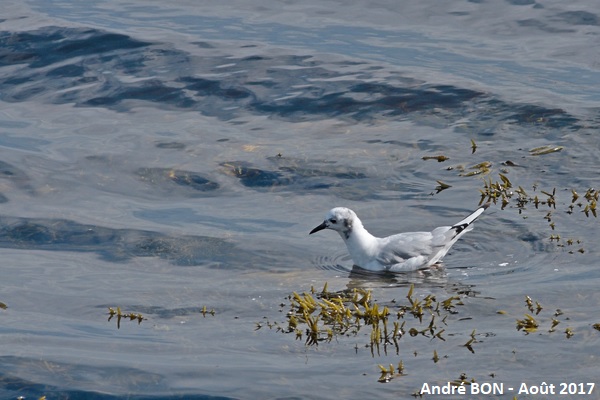
| Bonaparte's Gull (Chroicocephalus philadelphia (Ord, 1815)) |

|
|
Scientific name: Chroicocephalus philadelphia (Ord, 1815) Common name: Bonaparte's Gull French name: Mouette de Bonaparte Order: Charadriiformes Family: Laridae Size: Body size: 28 to 30 cm; Weight: 170 to 230 g; Wingspan: 78 to 84 cm. Habitat: Sea coasts, lakes and marshes at the edge of the boreal forest during the breeding season, and near various bodies of water in winter. Food: Insects, small fishes and sea worms. Nesting: Bonaparte's Gulls do not nest in colonies. The nest is a small platform between 4 and 15 meters high on a tree bordering a body of water. There is a clutch of 2-3 eggs about late May. Migration: Bonaparte's Gulls move south in winter and stay along the Pacific coasts to southern Mexico and along the Atlantic coasts to the Greater Antilles. Geographic area: North America. |
Bonaparte's Gull is a small gull that does not nest on the ground like other Laridae. The adult in breeding plumage has a black hood with fine white crescents above and below the eye. Neck and underparts are white. The back is grey. The wings are grey with black-tipped white outer primaries. The tail is white. The bill is thin and black. The legs are orange-red. The black hood disappears in winter plumage. The head becomes white with a dark ear patch. Bonaparte's Gull is very similar to the Black-headed Gull which is common in Europe but rarer in North America. The Black-headed Gull is slightly larger in size, its hood is brownish. Its bill is a little longer. |
| [To know more about the Bonaparte's Gull] [Top] |

|
I saw this solitary seagull at the Pointe-Noire Interpretation and Observation Centre near the Saguenay Fjord. You can guess the remains of a dark hood, a distinct black ear patch. The bill seems pretty thin to me. The bird appeared quite small to me, although the size is difficult to assess on an isolated bird. From these characteristics supplemented by the location of observation, I think that we have a Bonaparte's Gull. |